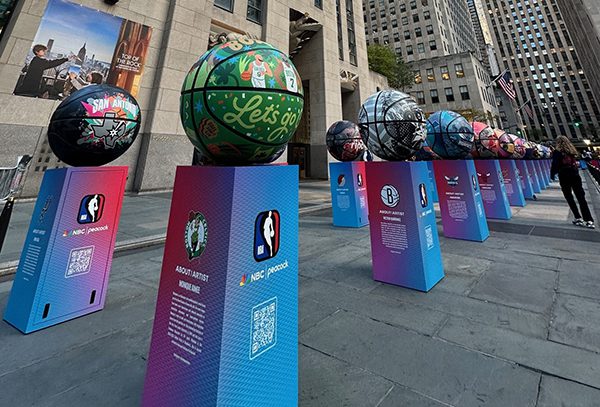Louis Vuitton. David Yurman. Jimmy Choo. Neiman Marcus. Claudio Merazzi.
Congratulations. You've just read the entire text of 13 full pages of fashion advertising. Graduates of the Evelyn Wood speed reading courses, eat your hearts out.
Readers with another 45 seconds to spare can probably make their way through the bulk of WWD Accessories, a 128-page, full-color companion to Women's Wear Daily. The advertisements in WWD Accessories tend to be full-page affairs, depicting a glowering model in soft focus who is either wearing or bearing a featured item or two. The high-literacy-quotient ads may have a list of cities where, presumably, these designers have showrooms. There is usually no other copy.
There is a sameness to these ads. They all seem to be set in soft space, a featureless land where people lounge around with their collagen-enhanced mouths half open. The ads are entirely image-driven. Never mind narrative, although Donald Staley, who created elaborate fantasies around every cloak and cap for the J. Peterman catalog, has nothing to worry about. Most of these ads don't carry tag lines, or anything that actively sells the items.
Now, most of us do not live in soft space. We live in places that have bricks and paint and street signs. Places where we can imagine ourselves, and our clothes if we are so oriented, playing an integral part of the daily drama of our lives. Rather than being swept up in "possibilities," these ads leave me with the distinct impression of apparel out of place.
Of all the ads in WWD Accessories, only one from The Frye Company gets this: Its models are posed, in their boots, outside of something that looks like a post-apocalyptic general store on Main Street. This is a location I am much more likely to find myself in than, say, someplace nebulous with walls draped with lots of fabric.
In what to my untrained eye appears to be a waste of space, the full-page ads in WWD Accessories – and in some cases spreads – are given over to one and only one piece of apparel. With that much space at a designer's fingertips, and no apparent pressing need to set items in any sort of context, why not jumble a few pieces together? Yes, it might look like a rummage sale, but doggone it, things sell at a rummage sale.
Regardless of whether these are ads geared to the trade, there is still a sales component. Why make the buyer work to purchase the goods, even in bulk? Give a Web address for online showrooms. Or at very least information on how to contact an order-taker.
At this point, creative directors are doubtless flinging their cigarette holders skyward and screaming "That's just the way it's done!" They might even be screaming that in French. But this strikes me as a lazy way out, a sort of conspiracy of uninspiredness that allows the directors to slap down an ad and have time for a fourth martini. It doesn't mean they are producing good advertising.
It can't be that this is convention among fashion advertising. Ads carried in Women's Wear Daily, the flagship newspaper, are much more information-oriented. (This is not a high standard to achieve.) In some cases this is necessary: An abstract collage of fabric and forearms hints at the 2007 collection of bridal and formal wear from Sposaitalia. Without the accompanying text, I never would have gotten that.
More to the point is a shot from YKK, which touts the need for Conceal open-end zippers. No, I don't know why there is a peacock atop a dress dummy in the zipper ad. But I understand that I am not supposed to see a zipper and I don't. And furthermore, the copy points out that by concealing a zipper, the focus is on "the beauty of your design."
I always thought that was what fashion advertising was supposed to be about.
Salvatore Ferragamo. Cole Haan. Hugo Boss. Guiseppi Zanotti. Nando Muzi.
Here are two more words.
No Sale.
 Network
Network

